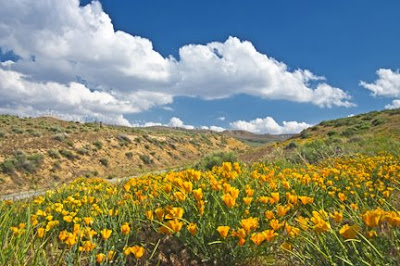Hello Pentaxians and friends. Special thank you to http://www.mundopentax.com/ in Spain for incorporating some of my posts on their site, translated in their native language. If only the Governments could get along as well as regular people and photographers do!

 Tehachapi is a small and quiet town. It is famous for the Tehachapi Rail Road loop, which I didn't have a chance to photograph this time around. It does have a lot of agriculture as shown above.
Tehachapi is a small and quiet town. It is famous for the Tehachapi Rail Road loop, which I didn't have a chance to photograph this time around. It does have a lot of agriculture as shown above.


 The tehachapi Pass in Southern California is home to thousands of electricity generating wind turbines. We need more of those to become energy self-sufficient.
The tehachapi Pass in Southern California is home to thousands of electricity generating wind turbines. We need more of those to become energy self-sufficient.
 It is a friendly town. Even the cows are friendly.
It is a friendly town. Even the cows are friendly.
 The area is about 4,000 ft in altitude. Rolling hills, country roads, and wind mills are the common scene. There is some kind of beauty in these wind mills.
The area is about 4,000 ft in altitude. Rolling hills, country roads, and wind mills are the common scene. There is some kind of beauty in these wind mills.
We went to Tehachapi this past weekend for some R & R. There isn’t really much to do there but I always wanted to stop and take some pictures. We always drive by when we go to the Bay Area, but it seems we never have time to stop. This Memorial Day Weekend, we drove to Tehachapi and stayed in a small motel. Since the price of gas is so high here, we didn’t want to drive too far. ($4.25 per gallon this past weekend...ouch!)
My step-son is walking the Pacific Crest Trail and we met him there for a few day. It gave him a chance to rest a little, sleep in a real bed, and take a real shower. While he spent some quality time with his mother (my wife), I had plenty of time to go around the area in search of good photographic opportunities. I came home with at least fifty keepers. I will post a collection of them on my Gallery soon but I thought I would include a few here. Of course this is just my opinion…we all like our own pictures.
Many of the photographs required the use of a tripod and a remote control as I wanted to capture some of the wind mills with the blades slightly blurred to accentuate movement. I realized, once there, that I had lost or forgot my Cable Switch CS-205. I use the K20D with the battery grip and was able to use the Remote Control-F which is stored in the Battery Grip along with a spare SD card. Now…how many Companies offer this convenience in their battery grips? I believe Pentax is the only one. Even better, the same Battery Grip fits the K10D as well. You see why I like Pentax equipment! The compatibility with older lenses is unparalleled and the sharing of battery grip between the K10D and the K20D is a first. The ability to store a remote and SD card in the grip is an added bonus.
I hope you have time to go out and take some pictures. It’s relaxing and it relieves the daily stress.
Thank you for reading,
Yvon Bourque.

California poppies in bloom.
 Tehachapi is a small and quiet town. It is famous for the Tehachapi Rail Road loop, which I didn't have a chance to photograph this time around. It does have a lot of agriculture as shown above.
Tehachapi is a small and quiet town. It is famous for the Tehachapi Rail Road loop, which I didn't have a chance to photograph this time around. It does have a lot of agriculture as shown above. 

 The tehachapi Pass in Southern California is home to thousands of electricity generating wind turbines. We need more of those to become energy self-sufficient.
The tehachapi Pass in Southern California is home to thousands of electricity generating wind turbines. We need more of those to become energy self-sufficient.  It is a friendly town. Even the cows are friendly.
It is a friendly town. Even the cows are friendly. The area is about 4,000 ft in altitude. Rolling hills, country roads, and wind mills are the common scene. There is some kind of beauty in these wind mills.
The area is about 4,000 ft in altitude. Rolling hills, country roads, and wind mills are the common scene. There is some kind of beauty in these wind mills.We went to Tehachapi this past weekend for some R & R. There isn’t really much to do there but I always wanted to stop and take some pictures. We always drive by when we go to the Bay Area, but it seems we never have time to stop. This Memorial Day Weekend, we drove to Tehachapi and stayed in a small motel. Since the price of gas is so high here, we didn’t want to drive too far. ($4.25 per gallon this past weekend...ouch!)
My step-son is walking the Pacific Crest Trail and we met him there for a few day. It gave him a chance to rest a little, sleep in a real bed, and take a real shower. While he spent some quality time with his mother (my wife), I had plenty of time to go around the area in search of good photographic opportunities. I came home with at least fifty keepers. I will post a collection of them on my Gallery soon but I thought I would include a few here. Of course this is just my opinion…we all like our own pictures.
Many of the photographs required the use of a tripod and a remote control as I wanted to capture some of the wind mills with the blades slightly blurred to accentuate movement. I realized, once there, that I had lost or forgot my Cable Switch CS-205. I use the K20D with the battery grip and was able to use the Remote Control-F which is stored in the Battery Grip along with a spare SD card. Now…how many Companies offer this convenience in their battery grips? I believe Pentax is the only one. Even better, the same Battery Grip fits the K10D as well. You see why I like Pentax equipment! The compatibility with older lenses is unparalleled and the sharing of battery grip between the K10D and the K20D is a first. The ability to store a remote and SD card in the grip is an added bonus.
I hope you have time to go out and take some pictures. It’s relaxing and it relieves the daily stress.
Thank you for reading,
Yvon Bourque.





 Last Monday, I got up early and drove to Silverwood Lake in Southern California. It's about twenty miles from where I live. Once there, I decided to drive up a dirt road that took me all the way to the top of the San Bernardino Mountains. What a nice quiet day this was. I was alone, and I stopped often along the way up to take some pictures. I had my K20D, the DA 16-45, the DA 10-17 and the DA 50-200. The higher I got, the fresher the air got. Only the sound of birds and wind could be heard. It was just me, my camera, my Jeep and Mother Nature. All the stress of the daily grind was gone.
Last Monday, I got up early and drove to Silverwood Lake in Southern California. It's about twenty miles from where I live. Once there, I decided to drive up a dirt road that took me all the way to the top of the San Bernardino Mountains. What a nice quiet day this was. I was alone, and I stopped often along the way up to take some pictures. I had my K20D, the DA 16-45, the DA 10-17 and the DA 50-200. The higher I got, the fresher the air got. Only the sound of birds and wind could be heard. It was just me, my camera, my Jeep and Mother Nature. All the stress of the daily grind was gone.

 Above is the chart from behind.
Above is the chart from behind. Above is what I saw in the viewfinder with the DA 16-45mm at full aperture and as the closest point it could auto-focus.
Above is what I saw in the viewfinder with the DA 16-45mm at full aperture and as the closest point it could auto-focus. Above is the enlarged chart, clipped to the smaller chart retaining the 45 degree angle. It is included in the free download.
Above is the enlarged chart, clipped to the smaller chart retaining the 45 degree angle. It is included in the free download. Above, you can see the enlarge chart clipped to the smaller chart from behind.
Above, you can see the enlarge chart clipped to the smaller chart from behind. Above, you can see the oval shave when viewed perpendicularly to the chart.
Above, you can see the oval shave when viewed perpendicularly to the chart. Above is the test of the Pentax DA 70mm Limited. It's a very sharp and accurate lens. Notice how the oval is now an almost perfect circle?
Above is the test of the Pentax DA 70mm Limited. It's a very sharp and accurate lens. Notice how the oval is now an almost perfect circle? Finally, the picture above was taken today, atop the San Bernardino mountains, to show that I am not a pixel peeper, I do take real photographs.
Finally, the picture above was taken today, atop the San Bernardino mountains, to show that I am not a pixel peeper, I do take real photographs.






